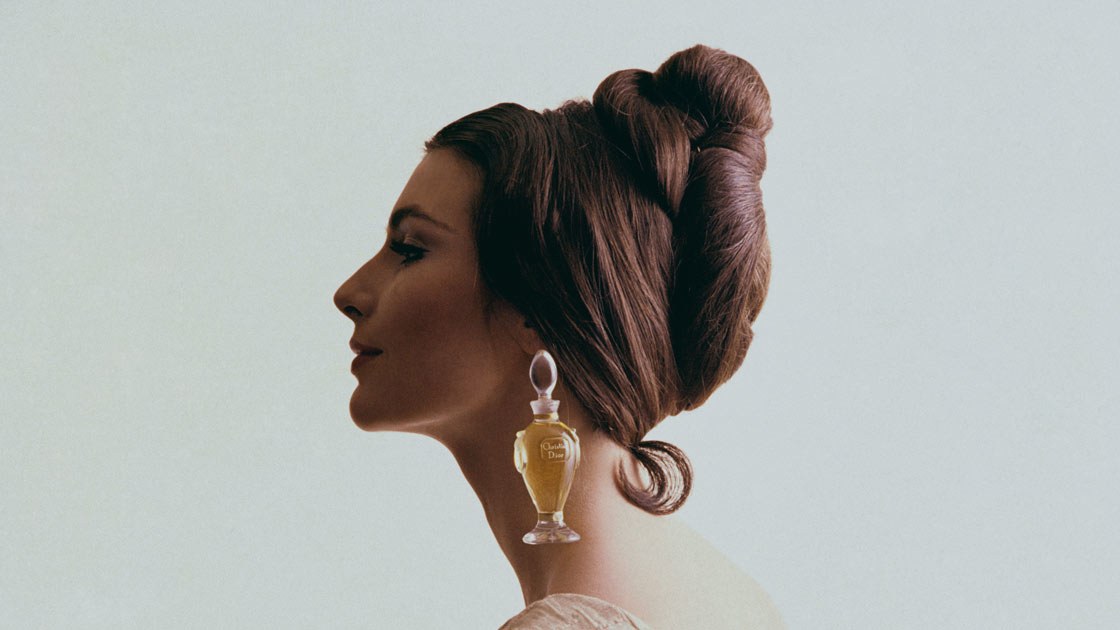
Wearing fragrance is easy—a little spritz, and you’re done. But wearing fragrance well requires a little more skill and finesse. For example: Did you know that correct placement depends entirely on both the environment in which it’s worn and the outfit for which it accessorizes? And that tendency you have toward dressing your wrists and then rubbing them together? “Very bad,” says award-winning French-Armenian perfumer Francis Kurkdjian, the nose behind such sophisticated olfactive hits as Christian Dior Eau Noire, Carven Le Parfum, and those from his own eponymous line out of Paris. And, sure, while a bottle of Chanel No. 5 may look like the perfect prop for any chic bathroom vanity, the daily stream of steam from the shower may be curbing its freshness (and, in turn, yours). Fortunately, a few simple tweaks can set you back on the right olfactory course. Here are five common mistakes women make when it comes to buying and wearing perfume—and how to fix them in a flash.
Don’t Rub—Just Spray
That almost unconscious application habit—misting a little scent on your wrists and then pressing them together before reaching for your neck—is actually “very bad,” says Kurkdjian. Why? The friction created by rubbing, he continues, “heats up the skin, which produces natural enzymes that change the course of the scent.” Most impacted are the top and middle notes, along with the dry-down, or the last and longest period of your fragrance’s unfolding. “With a floral, for example, [heat] warms up everything, ultimately [causing it] to lose its crispness,” he explains. To preserve the integrity of your fragrance (and also ensure it lasts longer on your skin), spritz both wrists lightly, let the liquid sink in, and then do absolutely nothing at all, says Kurkdjian.
Environment Is Key
When it comes to storage, perfume is almost like a living organism—it’s extremely sensitive to environmental changes. “Perfume doesn’t like going from cold to hot,” Kurkdjian says, adding that such shifts in temperature “set off unexpected chemical reactions within the natural ingredients, and therefore age the perfume faster.” Leaving a citrus scent in the steamy bathroom, for instance, “affects the freshness” and can make a raw material, like patchouli, smell a little off. Ultraviolet rays can also alter a perfume’s color—turning amber tones into green, he warns. “You’d never leave a bottle of Champagne in the sun,” he says. Surprisingly, the best place to store fragrance is the box it originally came in, and at room temperature (or 70 degrees Fahrenheit). If you want to go above and beyond, consider treating it like a great cellar wine: “I know people who store one or two bottles of their signature scents in the refrigerator,” he says.
The Best Perfumes Come in Small Packages
Precious as it is, perfume should be consumed at a brisk pace. Keeping a half-used bottle on your shelf allows oxygen (the “natural enemy of perfume,” says Kurkdjian) to slowly break down the scent’s molecules, altering its composition. Of course, if you mist on your signature scent daily, a large 6.8-milliliter bottle likely won’t go to waste, he says, but in all other instances, Kurkdjian prefers smaller vessels (in the range of 2.4 to 1.2 milliliters) because they can remain fresh for up to three months. And if you’re faced with only one, rather generously sized bottle at the perfume counter? Assuming it has a screw cap or stopper, you can always decant the liquid into smaller vials or tuck your half-empty fragrances in the fridge to maintain their bloom, he says.
Synthetic Isn’t a Dirty Word
“People love the idea of all-natural [perfumes], but it doesn’t always exist,” says Kurkdjian, recalling perhaps the most popular note, musk, which was formerly derived from animals and now brings softness to the scent and enhances its trail. Other smells, such as peony, freesia, and lily of the valley, cannot be obtained by natural extraction simply because they don’t release any aroma whatsoever, he says, forcing them to instead be re-created with a blend of synthetic molecules. And while some of the best perfumers have used a blend of natural and synthetic molecules since the late 19th century, nowadays, chemical creations are tightly controlled and tested for safety by health organizations, including the Research Institute for Fragrance Materials (RIFM) in the U.S. For that reason, Kurkdjian says a blend of essential oils, absolutes, and man-made ingredients ensure the highest-quality scent.
When in Doubt, Use Your Head (Or Your Hair)
A few common-sense rules can carry a smell a long way. “Perfume doesn’t last long on dry skin,” says Kurkdjian, who suggests either a companion body lotion to your fragrance or an unscented moisturizer to prevent any olfactory interference. Where you put perfume matters, too. “Don’t cover it up with your clothing,” he says, and instead target areas exposed to the air: the pulse points of the neck and the wrists or inner elbows, if you’re wearing a sleeveless blouse. The only exception, however, is if you’re in an intensely hot climate—then it’s best to not apply scent directly to your body. “As you sweat, the natural oils of the skin [can] destroy your perfume faster,” he says, while offering the chic alternative of lightly misting your hair, scarf, or sarong. “Because they move with the air, it helps with the diffusion of the scent.” Talk about leaving a lasting impression.


